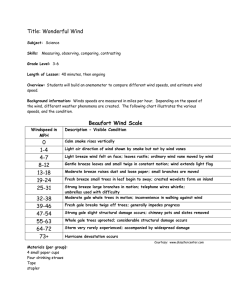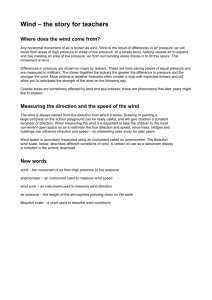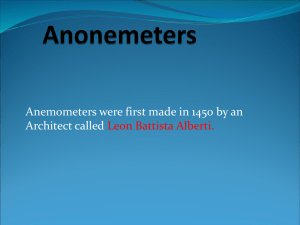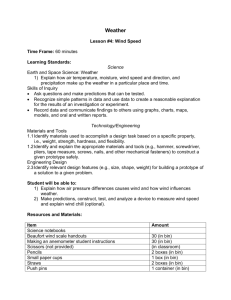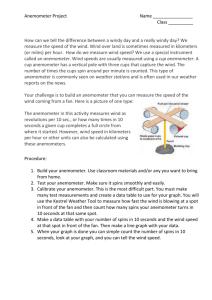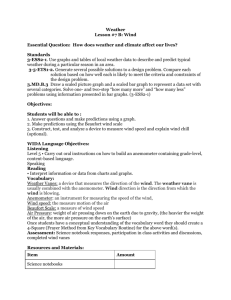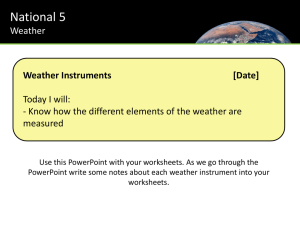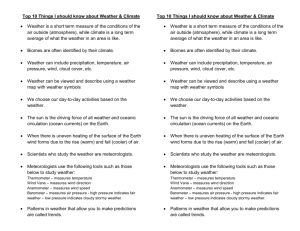Practical activities Wind speed (4.93 MB DOCX)
advertisement
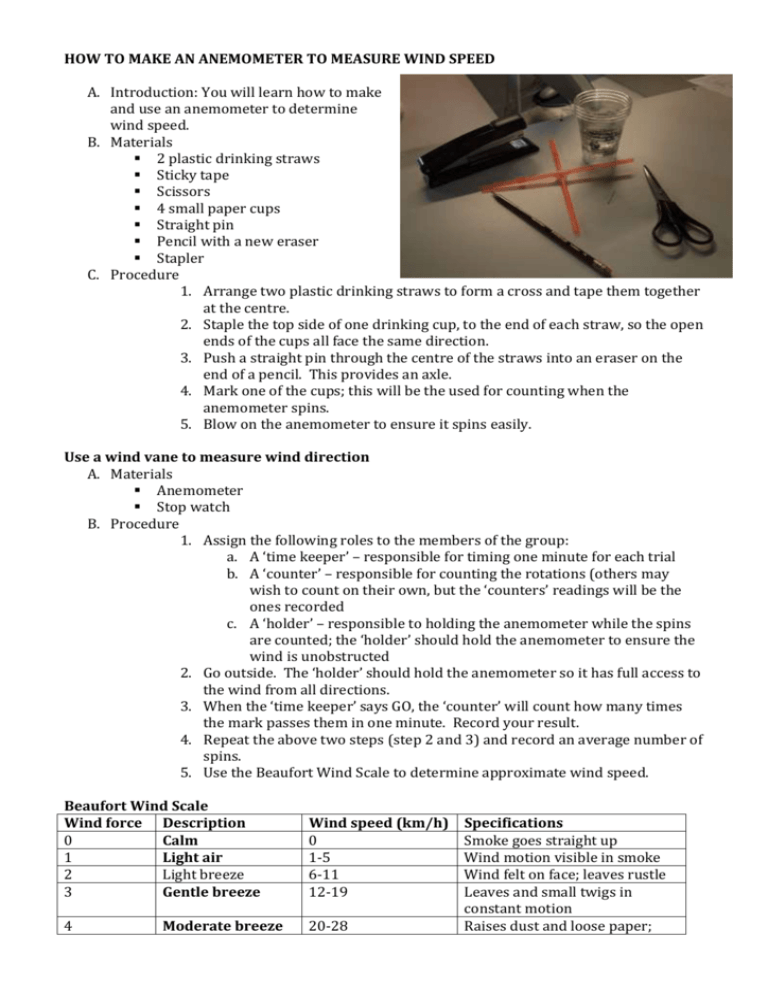
HOW TO MAKE AN ANEMOMETER TO MEASURE WIND SPEED A. Introduction: You will learn how to make and use an anemometer to determine wind speed. B. Materials 2 plastic drinking straws Sticky tape Scissors 4 small paper cups Straight pin Pencil with a new eraser Stapler C. Procedure 1. Arrange two plastic drinking straws to form a cross and tape them together at the centre. 2. Staple the top side of one drinking cup, to the end of each straw, so the open ends of the cups all face the same direction. 3. Push a straight pin through the centre of the straws into an eraser on the end of a pencil. This provides an axle. 4. Mark one of the cups; this will be the used for counting when the anemometer spins. 5. Blow on the anemometer to ensure it spins easily. Use a wind vane to measure wind direction A. Materials Anemometer Stop watch B. Procedure 1. Assign the following roles to the members of the group: a. A ‘time keeper’ – responsible for timing one minute for each trial b. A ‘counter’ – responsible for counting the rotations (others may wish to count on their own, but the ‘counters’ readings will be the ones recorded c. A ‘holder’ – responsible to holding the anemometer while the spins are counted; the ‘holder’ should hold the anemometer to ensure the wind is unobstructed 2. Go outside. The ‘holder’ should hold the anemometer so it has full access to the wind from all directions. 3. When the ‘time keeper’ says GO, the ‘counter’ will count how many times the mark passes them in one minute. Record your result. 4. Repeat the above two steps (step 2 and 3) and record an average number of spins. 5. Use the Beaufort Wind Scale to determine approximate wind speed. Beaufort Wind Scale Wind force Description 0 Calm 1 Light air 2 Light breeze 3 Gentle breeze Wind speed (km/h) 0 1-5 6-11 12-19 4 20-28 Moderate breeze Specifications Smoke goes straight up Wind motion visible in smoke Wind felt on face; leaves rustle Leaves and small twigs in constant motion Raises dust and loose paper; 5 6 7 8 9 10 Fresh breeze Strong breeze Near gale Gale Strong gale Storm 29-39 40-50 51-61 62-74 75-88 89-102 11 12 Violent storm Hurricane 102-117 118+ small branches moved Small trees begin to sway Large branches in motion Whole trees in motion Twigs break off trees Slight structure damage Trees uprooted; considerable structural damage Widespread structural damage Massive and widespread damage to structure C. Results: In your journal, draw up a table to record your results. D. Discussion: Provide an explanation for the results. In your journal answer the following: Explain how the anemometer works. Complete a statement, which states the results from your findings. Such as ‘On May 31, 2011 at 10.00 am, it was blowing a gentle breeze and the wind speed was approximately 12-19km/h.’ You can multiply the average number of spins by 60 to determine how many times the anemometer would spin in an hour. In your journal complete a statement, which states how many times your anemometer spins per hour. Sample data table Date Time Number of spins (/minute) May 31, 2011 10.00 am 32 40 26 30 Average number of spins (/min) 32 Beaufort Wind Scale Description Wind speed (km/h) Gentle breeze 12-19
